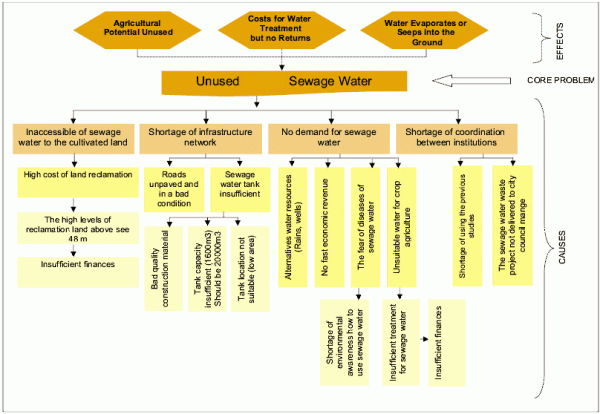Problem Tree Analysis - Brief Description
|
|
The problem tree technique helps to define the problems surrounding a project and it provides a way to order these problems into cause-effect relationships. Tree diagrams are multi-purpose, visual tools for narrowing and prioritising problems, objectives or decisions. Information is organized into a tree-like diagram. The main issue is represented by the tree’s trunk, and the relevant factors, influences and outcomes will show up as systems of roots and branches. In a project context, tree diagrams can be used to guide design and evaluation systems. As a community participation exercise, tree diagrams can help people to uncover and analyse the underlying causes of a particular problem or to rank and measure objectives in relation to one another. Examples of different kinds of trees are:
|
